The Mobile CPU Core-Count Debate: Analyzing The Real World
by Andrei Frumusanu on September 1, 2015 8:00 AM EST- Posted in
- Smartphones
- CPUs
- Mobile
- SoCs
S-Browser - AnandTech Article
We start off with some browser-based scenarios such as website loading and scrolling. Since our device is a Samsung one, this is a good opportunity to verify the differences between the stock browser and Chrome as we've in the past identified large performance discrepancies between the two applications.
To also give the readers an idea of the actions logged, I've also recorded recreations of the actions during logging. These are not the actual events represented in the data as I didn't want the recording to affect the CPU behaviour.
We start off by loading an article on AnandTech and quickly scrolling through it. It's mostly at the beginning of the events that we're seeing high computational load as the website is being loaded and rendered.
Starting off at a look of the little cluster behaviour:
The time period of the data is 11.3s, as represented in the x-axis of the power state distribution chart. During the rendering of the page there doesn't seem to be any particular high load on the little cores in terms of threads, as we only see about 1 little thread use up around 20% of the CPU's capacity. Still this causes the cluster to remain at around the 1000MHz mark and causes the little cores to mostly stay in their active power state.
Once the website is loaded around the 6s mark, threads begin to migrate back to the little cores. Here we actually see them being used quite extensively as we see peaks of 70-80% usage. We actually have bursts where may seem like the total concurrent threads on the little cluster exceeds 4, but still nothing too dramatically overloaded.
Moving on to the big cluster:
On the big cluster, we see an inversion of the run-queue graph. Where the little cores didn't have many threads placed on them, we see large activity on the big cluster. The initial web site rendering is clearly done by the big cluster, and it looks like all 4 cores have working threads on them. Once the rendering is done and we're just scrolling through the page, the load on the big cluster is mostly limited to 1 large thread.
What is interesting to see here is that even though it's mostly just 1 large thread that requires performance on the big cores, most of the other cores still have some sort of activity on them which causes them to not be able to fall back into their power-collapse state. As a result, we see them stay within the low-residency clock-gated state.
On the frequency side, the big cores scale up to 1300-1500 MHz while rendering the initial site and 1000-1200 while scrolling around the loaded page.
When looking at the total amount of threads on the system, we can see that the S-Browser makes good use of at least 4 CPU cores with some peaks of up to 5 threads. All in all, this is a scenario which doesn't necessarily makes use of 8 cores per-se, however the 4+4 setup of big.LITTLE SoCs does seem to be fully utilized for power management as the computational load shifts between the clusters depending on the needed performance.



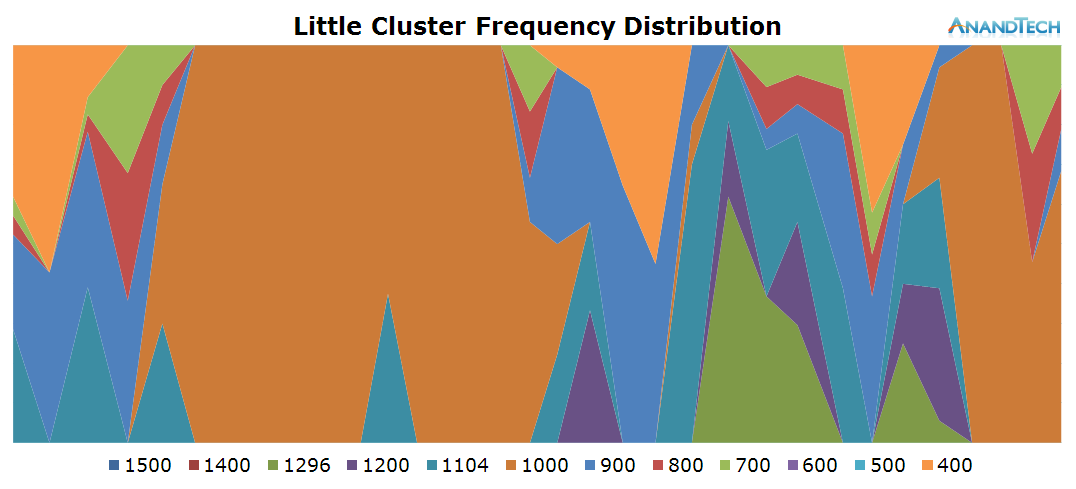

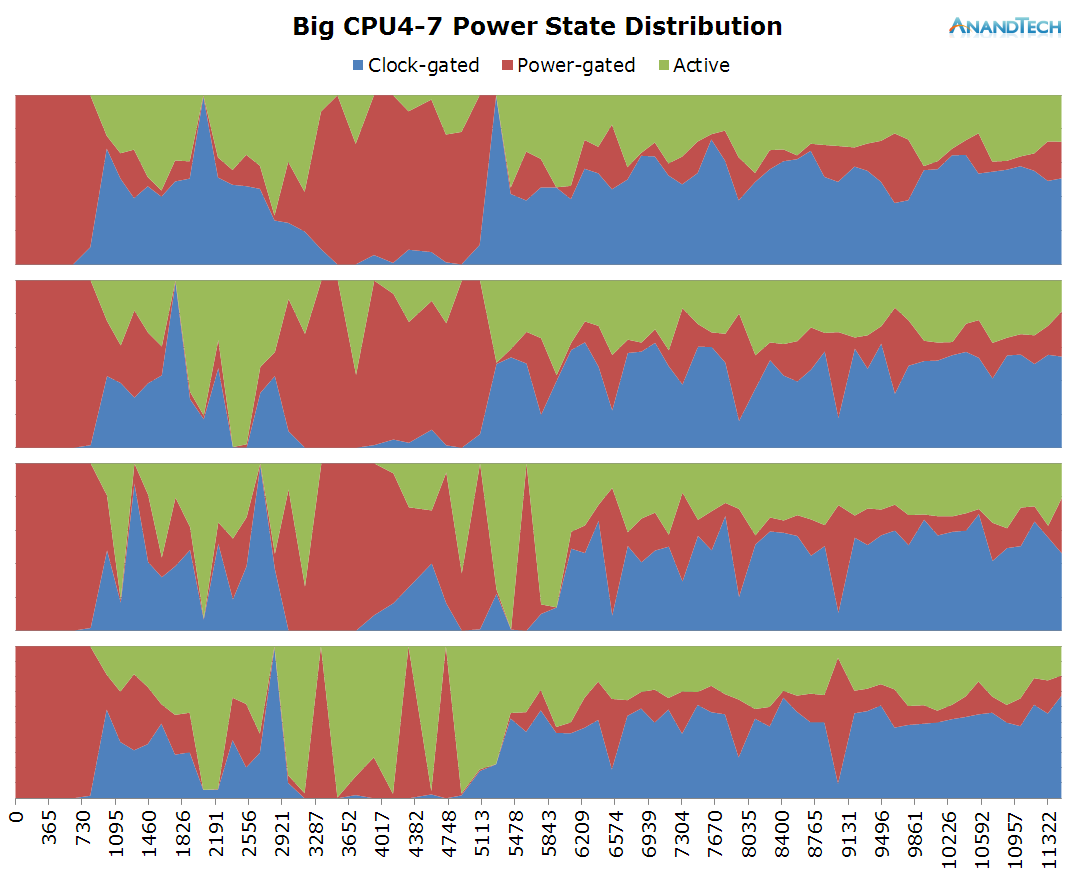
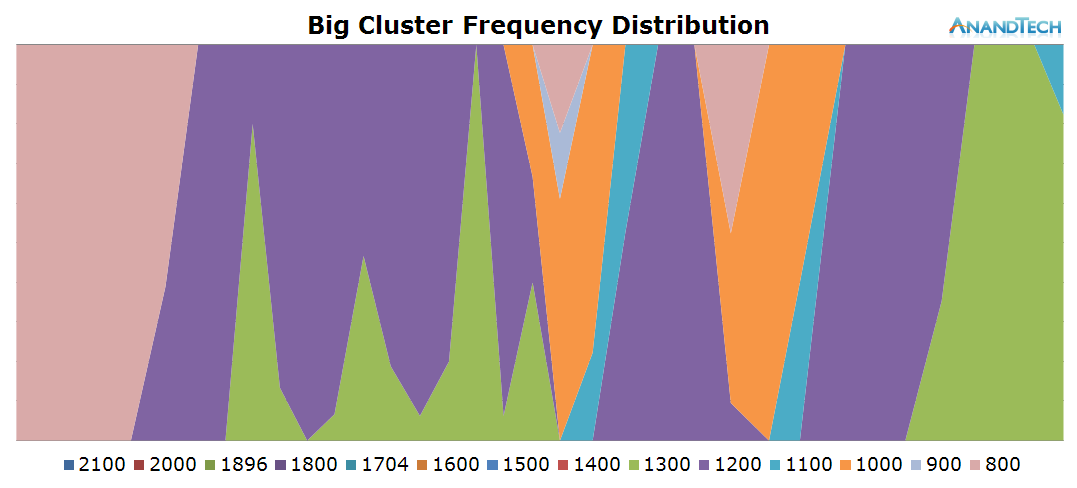
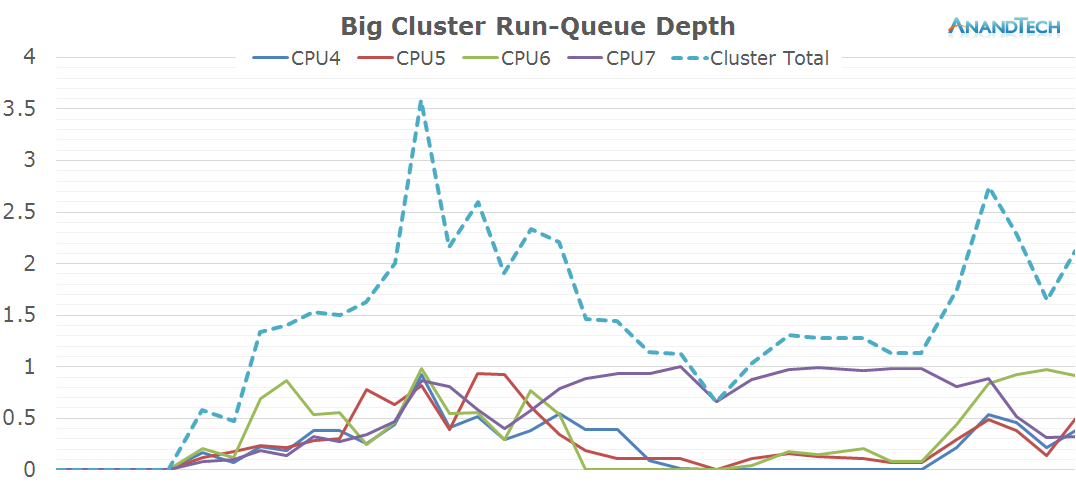
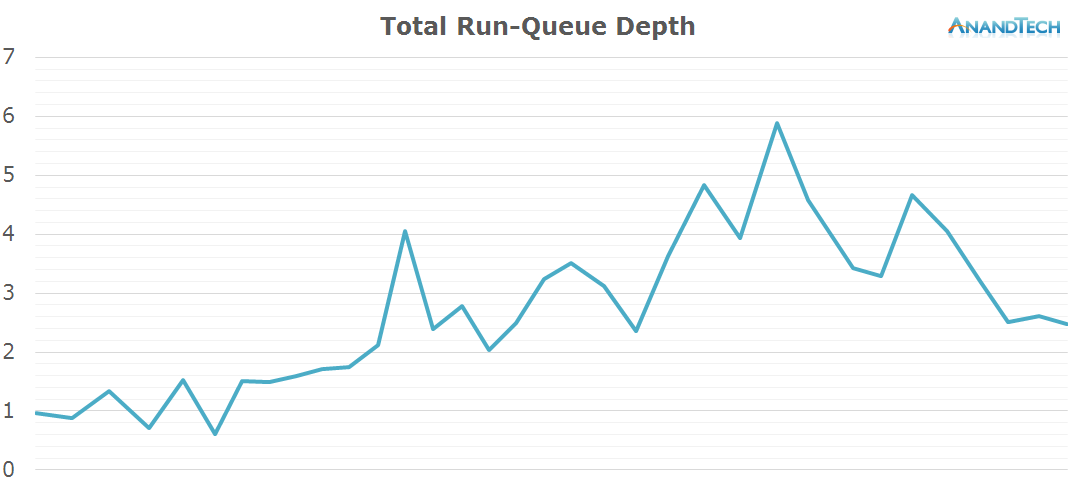








157 Comments
View All Comments
Gigaplex - Thursday, September 3, 2015 - link
An interesting and thorough analysis, although I'm concerned at some of the assumptions made in some of the conclusions. Just because a queue of 4 threads makes all the 8 big.LITTLE cores active doesn't mean that the architecture is effective. For all we know, the threads are thrashing back and forth, draining precious performance per watt.darkich - Friday, September 4, 2015 - link
Andrei, your articles are in a league of their own. Thanks for the great workmelgross - Thursday, September 10, 2015 - link
I'm still not convinced. The fact that it's doing what it does on these chips doesn't mean that their performance is as good as it could be, or that power efficiency is as good. We really need to see two to four core designs, with cores that are really more powerful, to make a proper comparison. We don't have that with the chips tested.blackcrayon - Thursday, October 8, 2015 - link
Exactly. It should at least show a design with a small number of powerful cores. Obviously with Apple's A series chips you have the issue of dealing with a different operating system underneath, but can't they use a Tegra K1 or something?Hydrargyrum - Friday, September 25, 2015 - link
The stacked frequency distribution graphs would be a *lot* easier to read if you used a consistent range of different saturations/intensities of a single colour (e.g. go from bright=fast to dark=slow), or a single pass from red to blue through the ROYGBIV colour spectrum (e.g. red=fast, blue=slow), to represent the range of frequencies.By going around the colour wheel multiple times in the colour coding it's *really* hard to tell whether a given area of the graph is high or low frequency. The difference in colour between 1400/800, 1296/700, and 1200/600 are very subtle to say the least.
Ethos Evoss - Thursday, November 12, 2015 - link
anandtech always uses weird non-popular words on its own site type ''heterogeneous '' never heard in my life and even usa or uk ppl have to search in cambridge/oxford dictionary :DDDImmediately u can say it is DEFO NOT USA or UK website.. They do not use such difficult words AT ALL :)
Ethos Evoss - Thursday, November 12, 2015 - link
ANd mainly they use when it comes to china products .. like mediatek or kirin or big.little topic etc..This site is DEVOURED or we could say powered by apple.inc :)